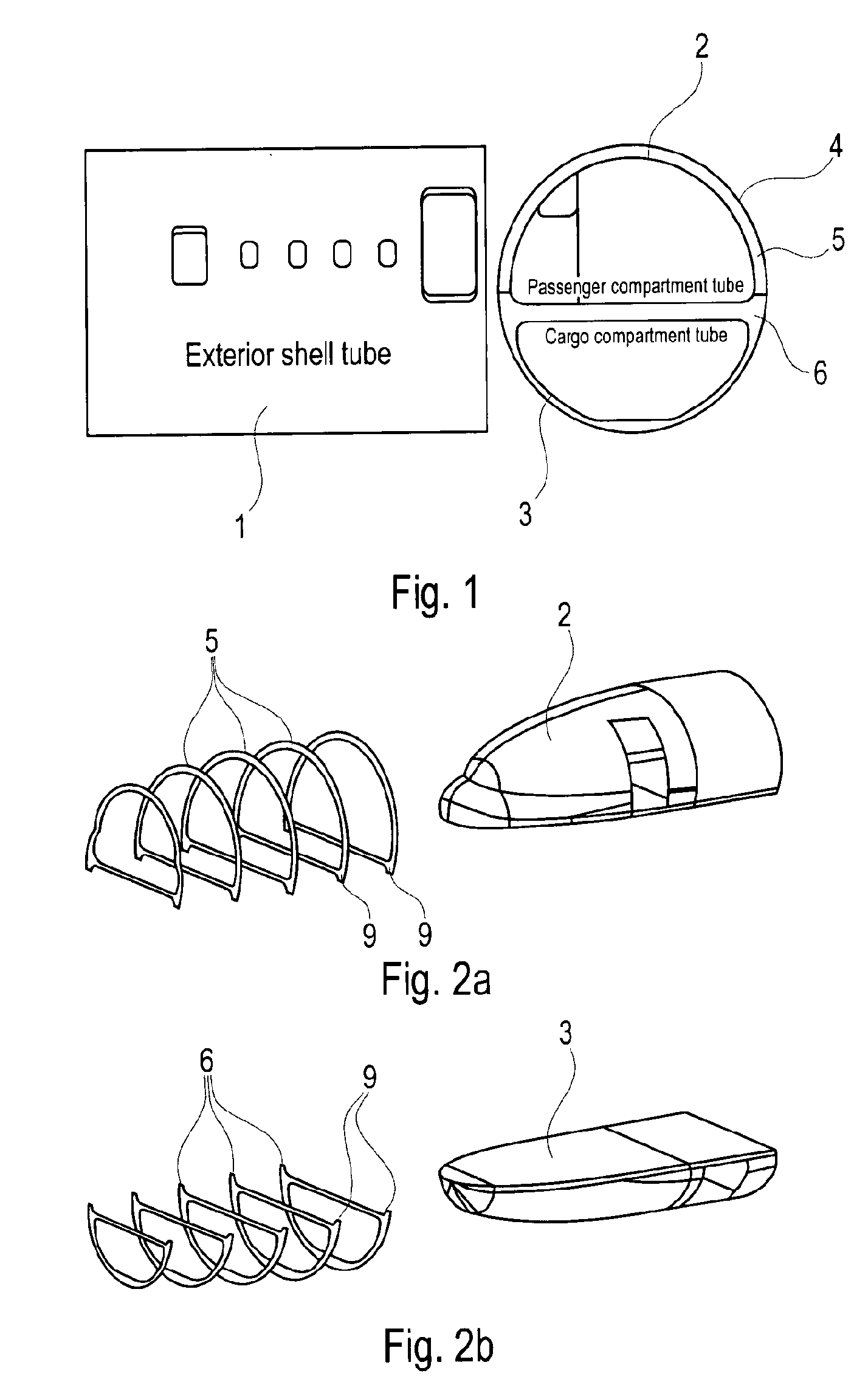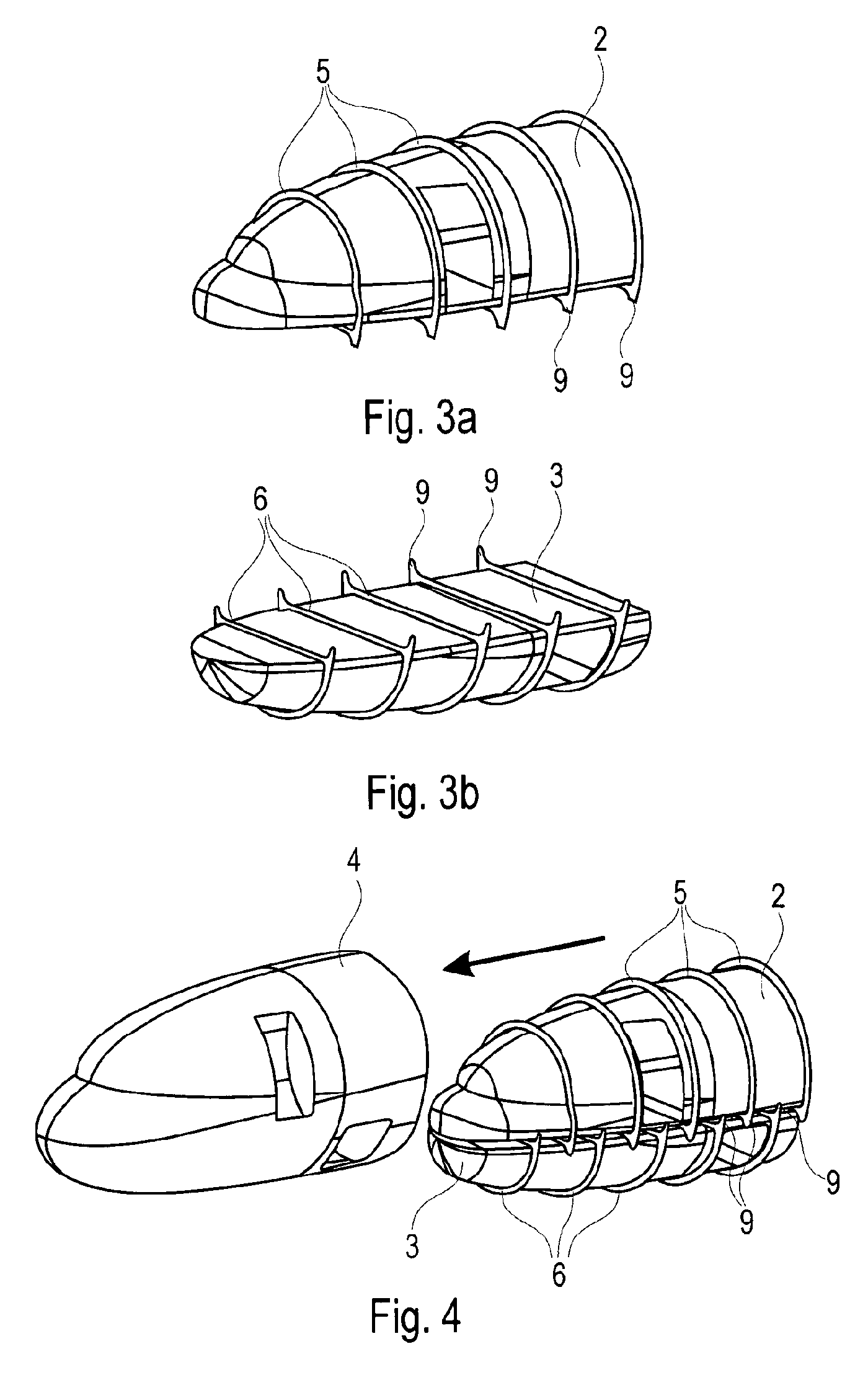Aircraft-fuselage assembly concept
a fuselage and assembly technology, applied in the direction of fuselages, sustainable transportation, transportation and packaging, etc., can solve the problems of destroying the fuselage structure, affecting so as to improve the stability of the fuselage section
- Summary
- Abstract
- Description
- Claims
- Application Information
AI Technical Summary
Benefits of technology
Problems solved by technology
Method used
Image
Examples
Embodiment Construction
[0030]FIG. 1, and in particular the right-hand diagram, shows a basic principle of the invention, according to which the fuselage section 1 according to the invention essentially comprises or consist of three different tubes 2, 3, 4 that are produced in separate steps and are joined only during final assembly of the fuselage. The fuselage section 1 thus comprises or consist of an exterior tube 4 that encloses the two interior tubes 2 and 3 that have been fitted into it, as shown in the right-hand diagram of FIG. 1. In this arrangement the first interior tube 2 forms a passenger cabin section while the second interior tube 3 forms a corresponding cargo compartment section. As shown in the right-hand diagram of FIG. 1 the two interior tubes 2 and 3 are arranged in the interior of the exterior tube so as to be spaced apart from each other, wherein the flat floor region of the first tube extends essentially in parallel to the flat ceiling region of the second tube 3. Spacing apart the t...
PUM
| Property | Measurement | Unit |
|---|---|---|
| face areas | aaaaa | aaaaa |
| air pressure | aaaaa | aaaaa |
| altitude | aaaaa | aaaaa |
Abstract
Description
Claims
Application Information
 Login to View More
Login to View More - R&D
- Intellectual Property
- Life Sciences
- Materials
- Tech Scout
- Unparalleled Data Quality
- Higher Quality Content
- 60% Fewer Hallucinations
Browse by: Latest US Patents, China's latest patents, Technical Efficacy Thesaurus, Application Domain, Technology Topic, Popular Technical Reports.
© 2025 PatSnap. All rights reserved.Legal|Privacy policy|Modern Slavery Act Transparency Statement|Sitemap|About US| Contact US: help@patsnap.com



